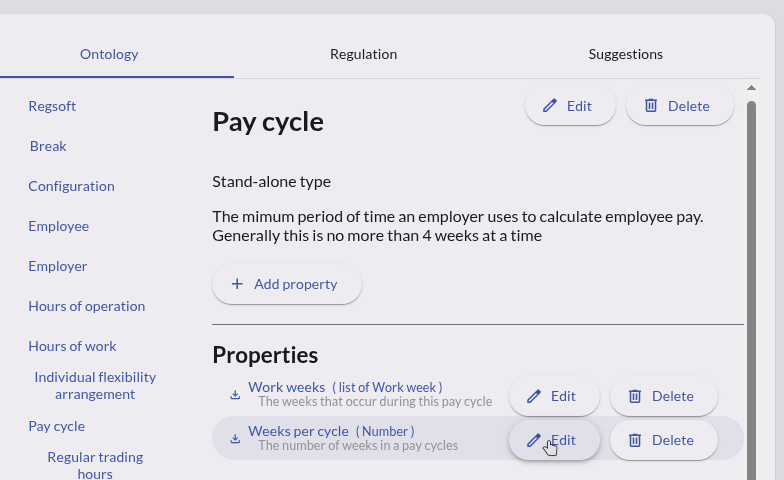Robust data definitions
Defining data types sound pretty boring, but they are crucial for the success of any digital platform.
Our editor makes it simple to define the data that is required to prove compliance. In most cases, we simply create Types and Properties that directly match the text in the regulations.

The real magic occurs when our rules validate compliance data. Since the data types are well defined, our rules don't have to care where the data comes from, so long as it is presented in the correct format.
The most simple format that our system can read is (roughly) a comma-separated list of values. CSV files represent the lowest-common-denominator of data sharing, and allow data to be imported from almost any system in existence.
Beyond CSVs, our system is designed to for deep integration with existing systems. Our rules operate by issuing queries for the data they need, and it's up to a data provider to answer that query however it wants.
Take, for example, this imaginary query:
- "Please return me a list of all your employees and include their id and name"
We have a pre-built data adaptor that can read values from a CSV file to answer queries. This allows businesses to test the system with the lowest level of commitment.
And once you are ready to move into real-time compliance verification, you can create a custom query adaptor that queries your existing data stores to return the requested data. This mapping layer provides for great flexibility and can accommodate nearly any situation.
